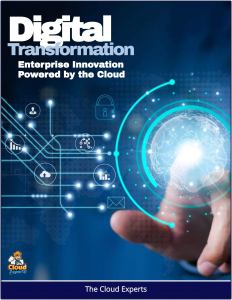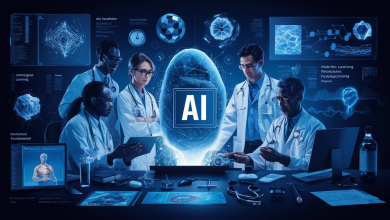 The world of manufacturing is undergoing a profound transformation with the advent of Industry 4.0.
The world of manufacturing is undergoing a profound transformation with the advent of Industry 4.0.
Industry 4.0, also known as the Fourth Industrial Revolution, represents a paradigm shift in manufacturing.
It encompasses the use of cyber-physical systems, the Internet of Things (IoT), cloud computing, and Ai to create a highly interconnected and intelligent network of machines, devices, and humans. This integration enables factories to operate autonomously, make data-driven decisions, and optimize processes in real-time.
Industry 4.0
Industry 4.0 is a term used to describe the ongoing automation and digitization of traditional manufacturing and industrial practices. McKinsey, a renowned global management consulting firm, has published an article titled “Capturing the true value of Industry 4.0” that delves into the potential benefits and challenges of this transformative trend.
The McKinsey article explores the various benefits that organizations can derive from embracing Industry 4.0, emphasizing the potential for increased productivity, cost reduction, and improved operational efficiency through the use of smart machines and data analytics.
By leveraging these technologies, manufacturers can achieve higher levels of automation, customization, and sustainability, and other key benefits:
- Increased productivity and efficiency through optimized processes and predictive maintenance.
- Improved quality control and reduced defects through real-time monitoring and data analysis.
- Enhanced flexibility and customization capabilities to meet individual customer demands.
- Reduced costs through optimized resource allocation and waste reduction.
- Improved worker safety and ergonomics through the use of collaborative robots and automation.
Industrial Metaverse
One key foundation of Industry 4.0 is the use of the ‘Industrial Metaverse’ and ‘Digital Twins’. The industrial metaverse is the concept of a digital world to mirror and simulate real machines and factories, buildings and cities, grids and transportation systems.
Enterprises like Renault are pioneering these developments for their factory operations. 100% of the production lines, 8,500 pieces of equipment, have been connected to collect more than 1 billion data every day. To achieve these objectives, it relies on 4 dimensions: massive data collection, digital twins of processes, connection of the Supply Chain ecosystem and a set of advanced technologies.
In this keynote talk Judson Althoff, Microsoft Executive Vice President explains the differences between the Consumer Metaverse, Commercial Metaverse and Industrial Metaverse, and this customer showcase video shares a panel conversation where Microsoft explored how customers BMW and WPP are leveraging industrial metaverse technologies today and why they’re excited about the possibilities that NVIDIA’s Omniverse on Azure enables.
Microsoft Azure will host two new cloud offerings from NVIDIA:
NVIDIA Omniverse™ Cloud, a platform-as-a-service giving instant access to a full-stack environment to design, develop, deploy and manage industrial metaverse applications; and NVIDIA DGX™ Cloud, an AI supercomputing service that gives enterprises immediate access to the infrastructure and software needed to train advanced models for generative AI and other groundbreaking applications.
With Omniverse connected to Azure Cloud Services Digital Twins and Internet of Things, companies can link real-time data from sensors in the physical world to their digital replicas. This will enable enterprises to build and operate more accurate, dynamic, fully functional 3D digital twins that automatically respond to changes in their physical environments. Azure provides the cloud infrastructure and capabilities needed to deploy enterprise services at scale, including security, identity and storage.
Additionally, the companies are bringing together their productivity and 3D collaboration platforms by connecting Microsoft 365 applications — such as Teams, OneDrive and SharePoint — with NVIDIA Omniverse™, a platform for building and operating 3D industrial metaverse applications.
The collaboration will accelerate enterprises’ ability to digitalize their operations, engage in the industrial metaverse and train advanced models for generative AI and other applications.
Digital Twins
What if you could have a digital twin of any physical asset or environment? One that empowered you to run simulations to discover things that are important to you.
To apply AI to sense that environment and automate things. To interact with that digital twin and all the insights it contains in a collaborative way in mixed reality. All this is happening on the Microsoft Cloud with leading edge companies taking advantage of digital twins, mixed reality, AI, IoT, and the power of the intelligent cloud and the intelligent edge.
Companies are increasingly exploring Digital Twins as a mechanism to control and monitor connected environments. Learn how Acuity Brands utilizes Azure Digital Twin to provide customers valuable insights into their built environment with Atrius Locator.



